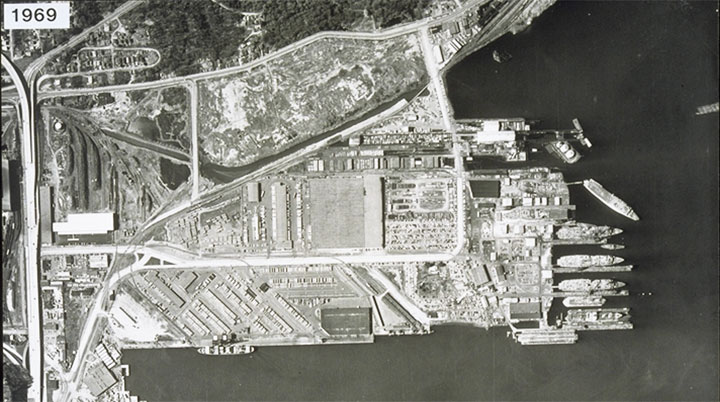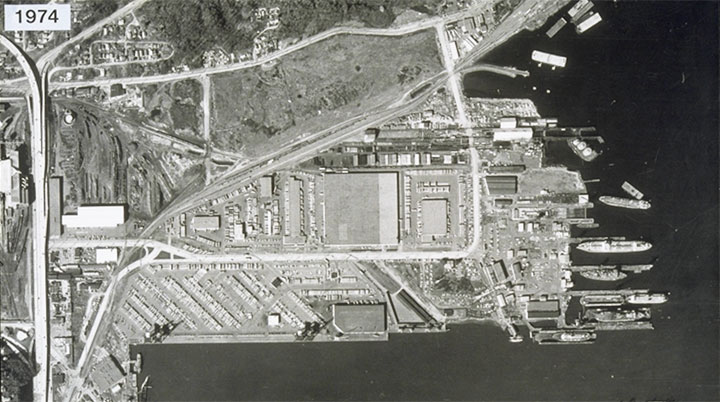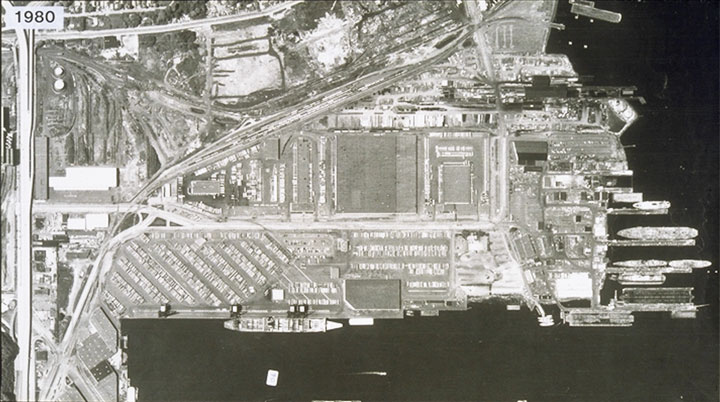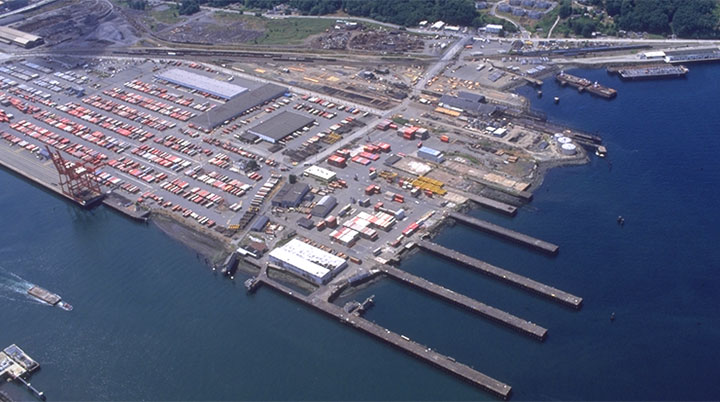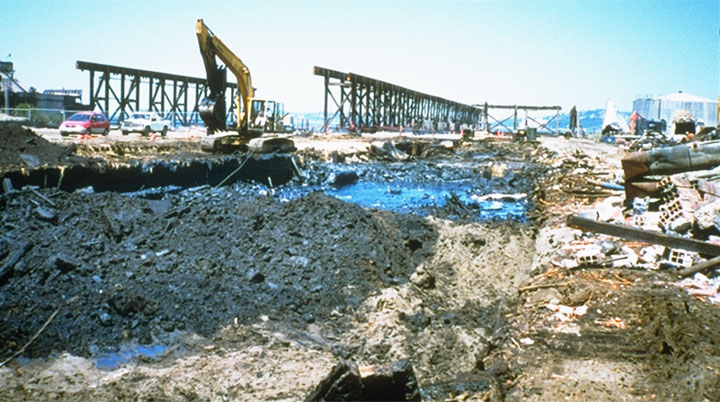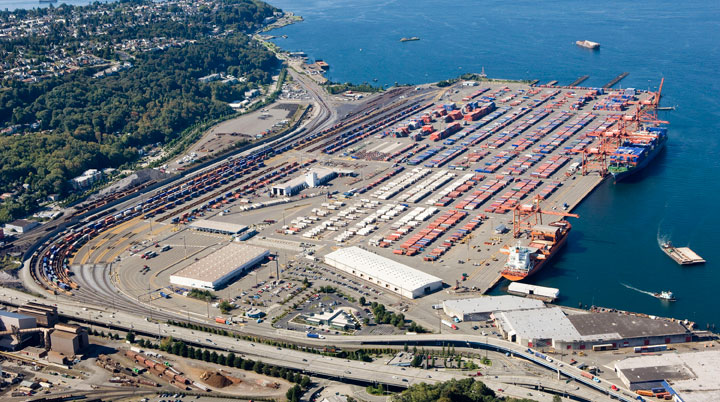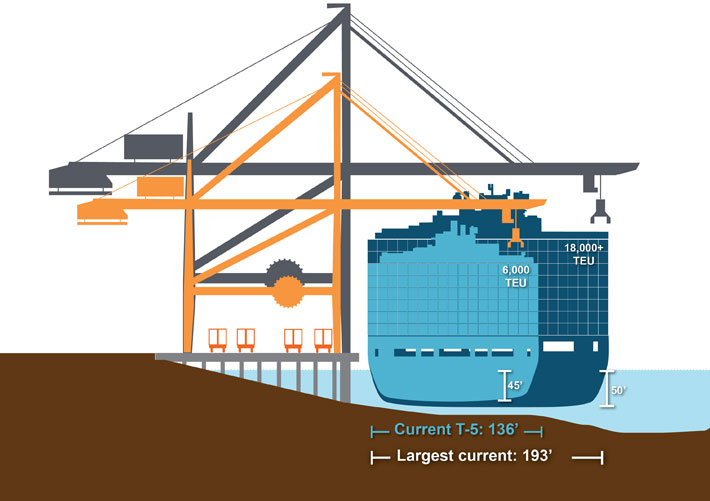Background
The Terminal 5 area has been dedicated to marine cargo and maritime industrial use for more than 100 years. In 1994, a combined U.S. Army Corps of Engineers, Washington State Department of Ecology, and Port of Seattle federal-state Environmental Impact Statement (EIS) was prepared to comply with environmental review requirements prior to the 1999 cleanup, redevelopment, and expansion of the terminal to accommodate additional container services.
Dramatic changes in the container cargo shipping industry occurred subsequent to the 1999 Terminal 5 redevelopment, and the pace of that change has accelerated in recent years. Ultra-large container ships with container capacity of more than 10,000 twenty-foot equivalent units (TEU) regularly call at West Coast ports with vessels of 18,000-TEU capacity entering the market. These larger containers ships will make fewer calls and only call at ports capable of accommodating them. In response to these industry changes, Northwest Seaport Alliance (NWSA) proposed improvements at Terminal 5 to accommodate larger vessels.
The Terminal 5 Improvement Project is a Port of Seattle and NWSA project. Acting as Lead Agency for the environmental review of the proposal, the Port of Seattle hired a team of technical analysts to provide an objective analysis of the proposal and its likely impacts. The Final EIS was issued in 2016.
